by Alessandra Ressa
For one hundred years a World War I strategic military site in Trieste has been abandoned, at the mercy of Bora winds. What remains of the Austro-Hungarian military trenches and rock shelters on Mount San Michele, in Val Rosandra, is slowly but inexorably crumbling to the ground, making its original nature discernible only to the expert eye.
But the Austrians weren’t the first to spot and fortify this particular hill for defense purposes. Earlier populations considered it of vital importance to control access from the sea and land. Near the trenches lay the remains of a prehistoric hill fort (some of its rocks were used for later fortifications).
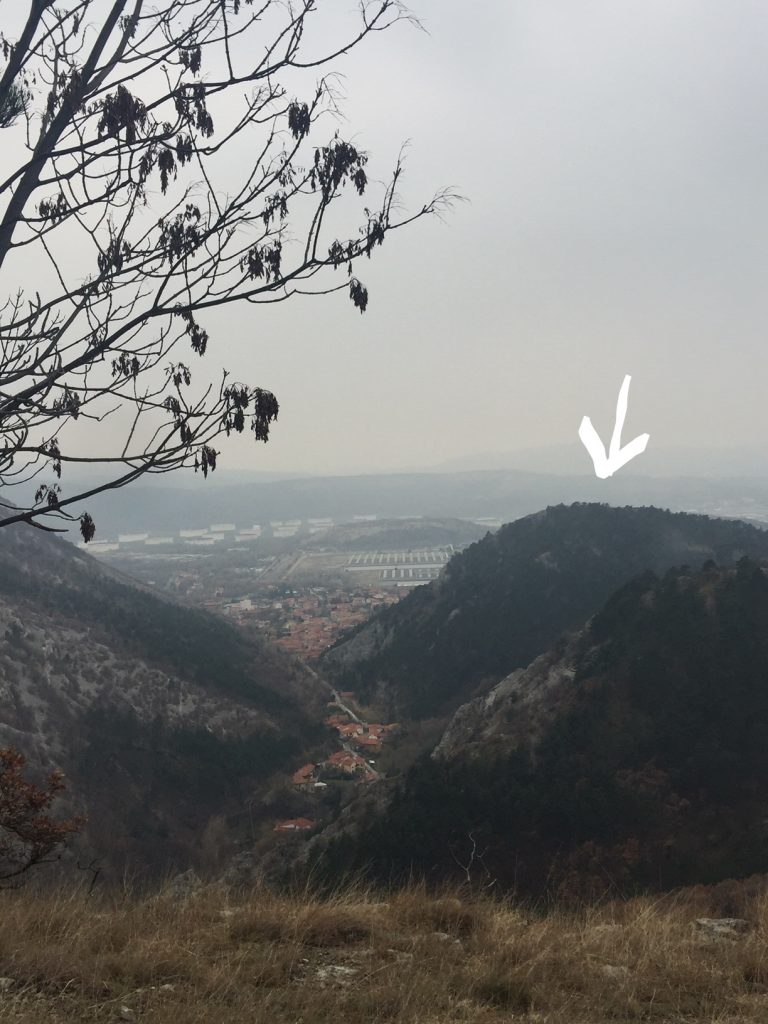
The location of these military sites, in the heart of busy Val Rosandra yet off the beaten track, makes it an unmissable destination if you are fond of military history and hiking in nature, but wish to avoid crowds of fellow hikers.
Rest assured, you will meet no one along the paths, but be ready to improvise when it comes to finding your way around. The forgotten trenches of Mount San Michele as well as the caves used as shelters are located at the top of a steep hill where the village of Bagnoli ends, and the valley begins.
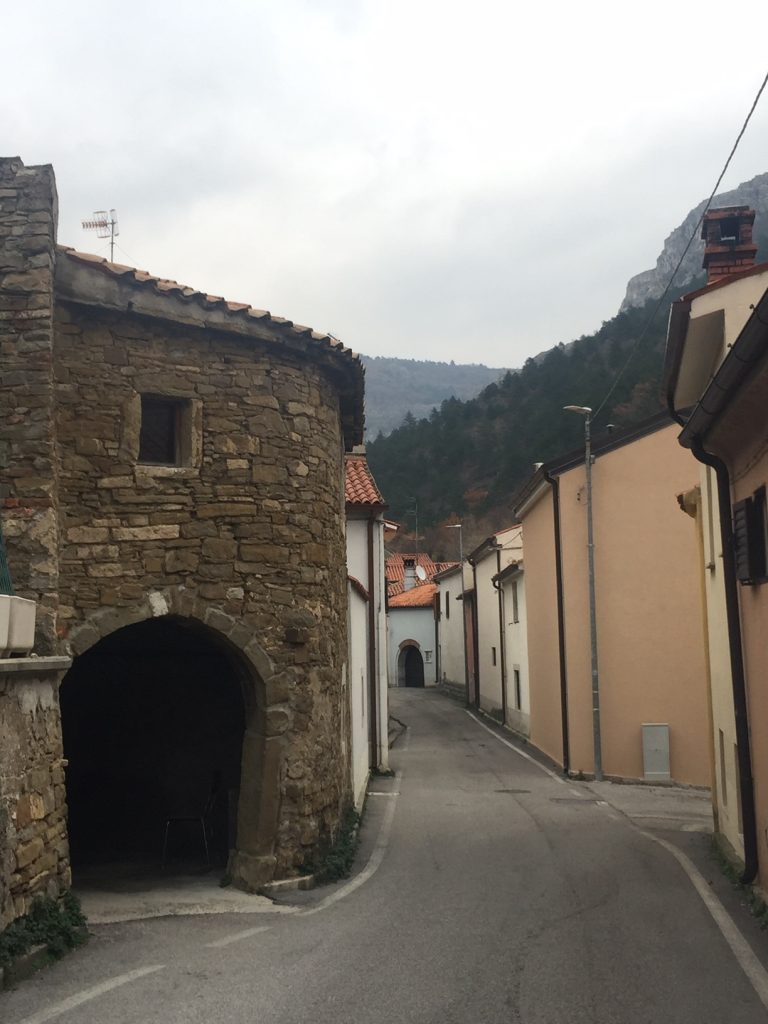
After the village, heading towards the Val Rosandra natural reserve, you will notice a small artificial cave on your left. If you are not sure it is the one, check inside for plastic tanks. Unfortunately, although it belongs (together with the rest of the site) to local “comunelle”, so in a way it is an old communal private property that allows public passage, the cave has been used as a dump for years.
That is the first military shelter dug in the rock. To its left, you’ll see a steep rock trail that will take you up for a few hundred meters, before disappearing completely. Do not despair and continue your climb up, following whatever path seems safest to you.
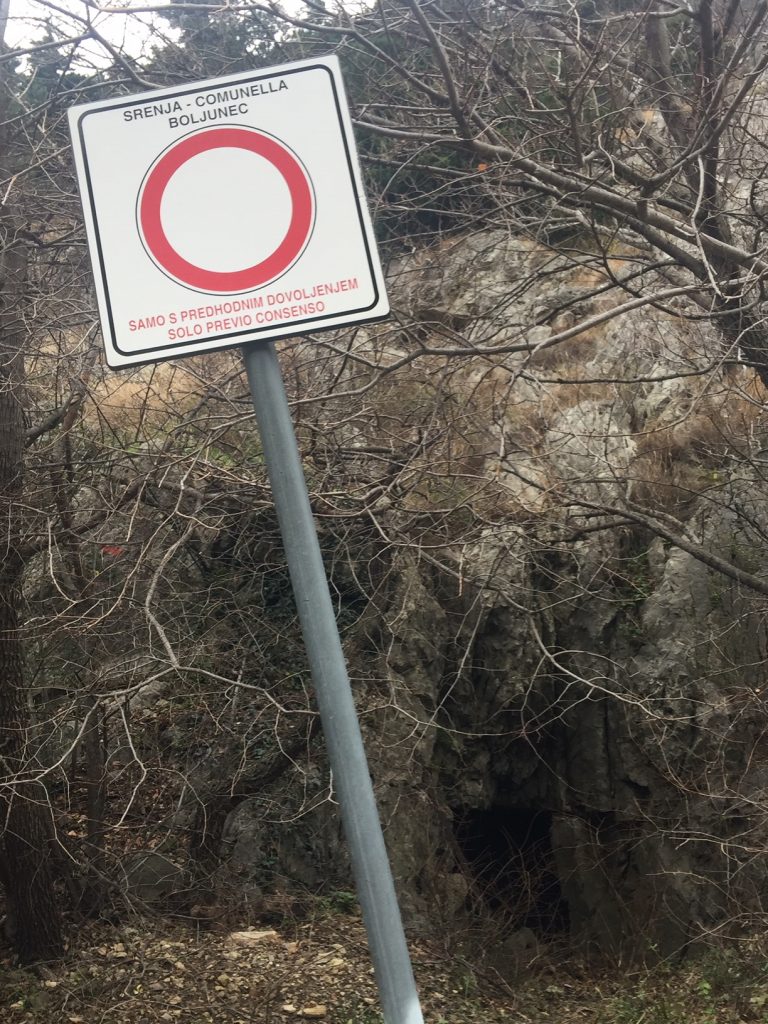
As you are climbing the steep, rocky side of the hill you will reach more military shelters dug in the rocky vertical walls of the hill, and a wide cave you can explore in full safety (bring a flashlight). The view from there is breathtaking as it opens to the village of Bagnoli, hilly Slovenia, and to terraced vineyards down to the sea.
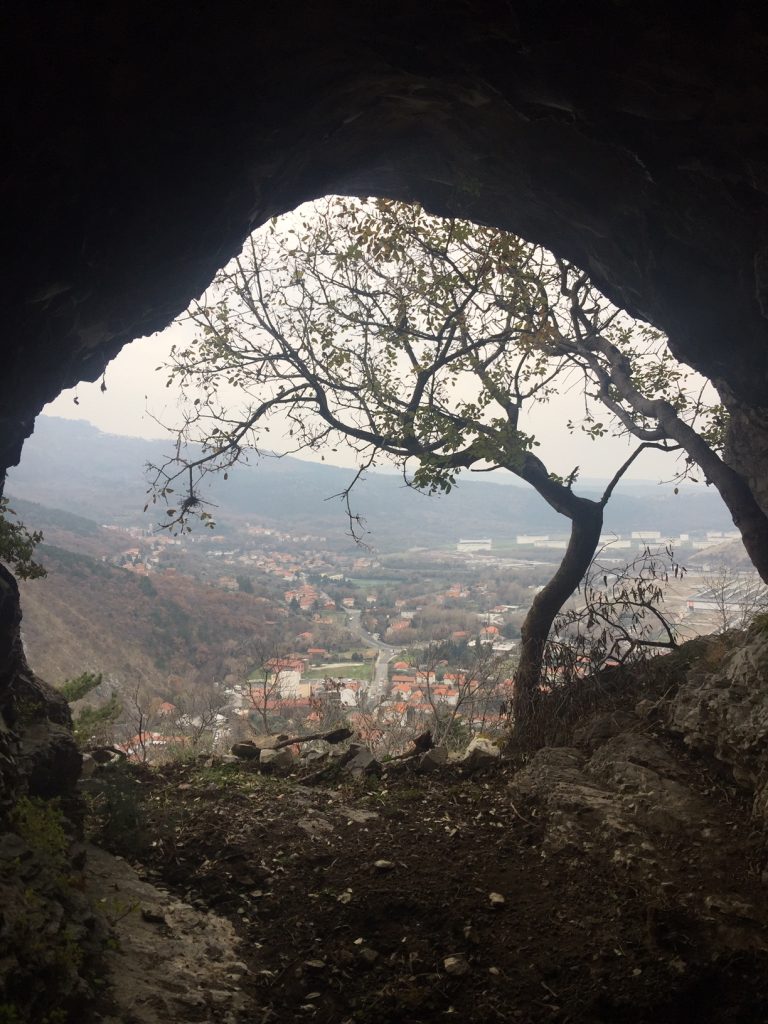
Once you leave the cave, continue climbing sideways up on the rocky terrain keeping to the left until you pass an antenna, which may be for lightning protection. Along the rocky slopes are the few remains of the walls of the prehistoric fort. These aren’t easy to identify among the abundant amounts of crumbling rocks everywhere. Continue all the way to the top of the hill, which eventually turns grassy and soft, with occasional winter blooms.
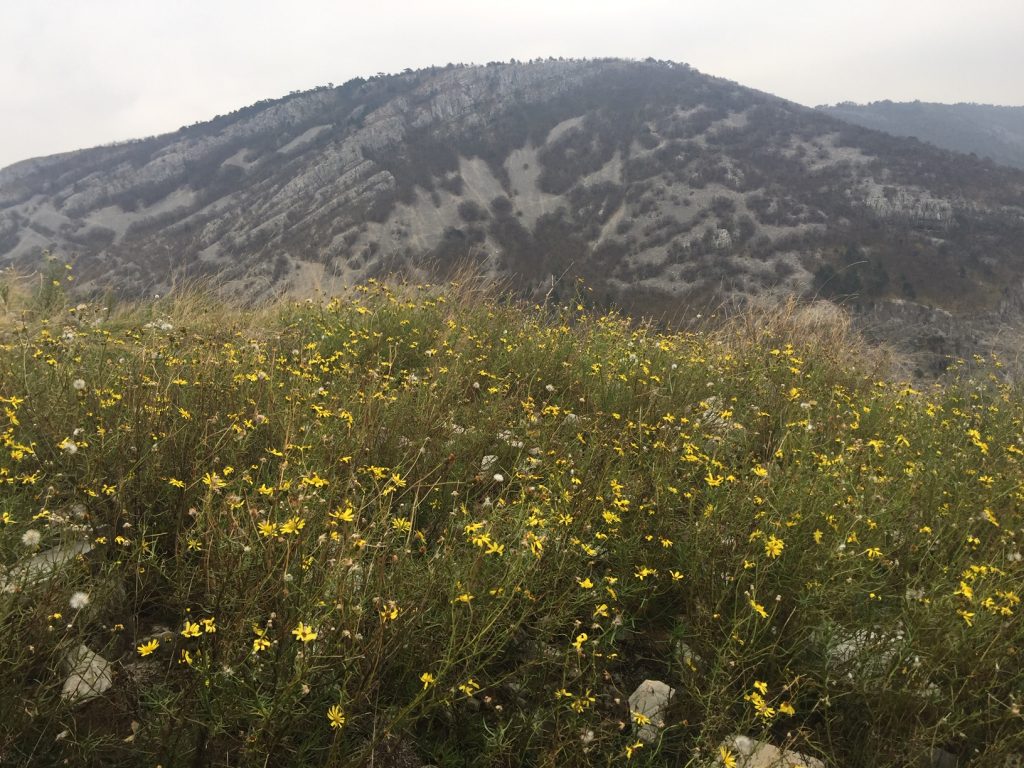
Once you reach the top, you’ll be amazed at the incredible 360° view of Trieste, from Slovenia all the way to Miramare and the Val Rosandra bare peaks. I have rarely seen such an inspiring solitary site where I felt so familiar with everything below and yet felt like I was seeing it for the first time.
Look around for trenches, as there are several sections still standing in circular alignments around the top. The brick shelter at the very top is where a trail begins, which will take you down the mountain along the other side, a lovely softer downhill walk that is pleasantly covered in woods.
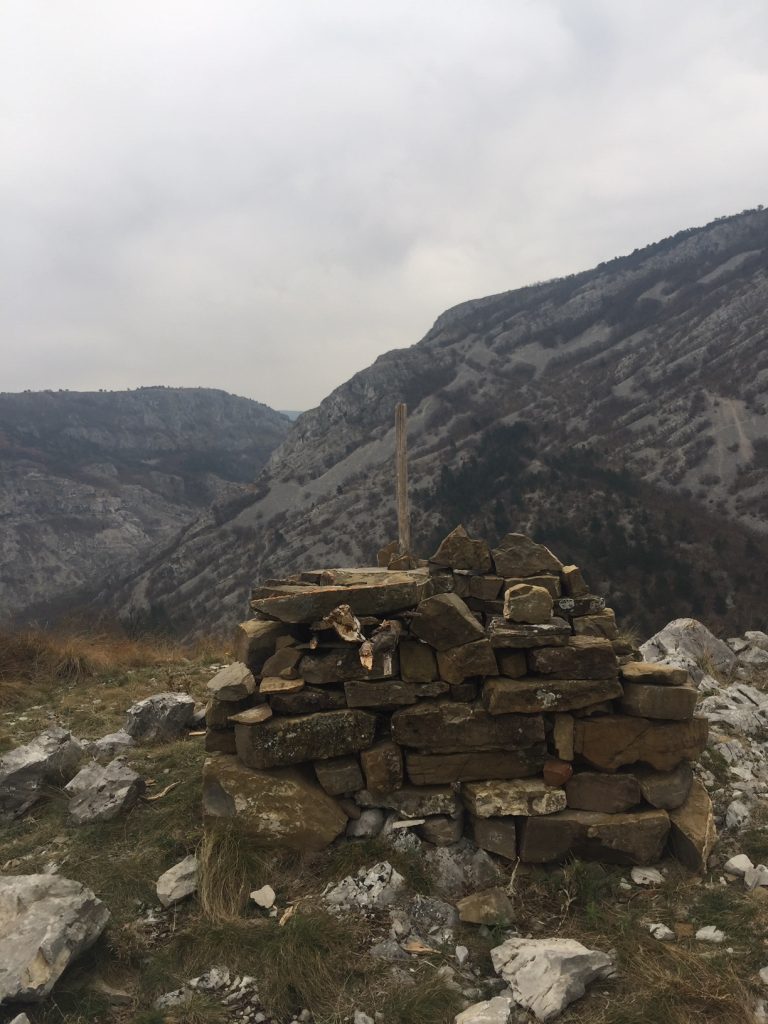
As few people visit Mount San Michele, the trail for the downhill descent is once again not easy to follow as it frequently disappears here and there due to little landslides or bush overgrowth. You will however eventually get to one of the main Val Rosandra trails. Just go downhill!
The trenches of Mount San Michele are part of the defensive line of fortifications of WWI from Sistiana to Istria. This particular site, thanks to its strategic position, was built both for observation and defensive purposes in case of attack from land or sea. At the time it was completely bare. According to local historians, the 28th Hapsburg regiment was installed here.
It was known as “regiment Prague” because most of the soldiers came from the Czech Republic, then part of the vast Austro-Hungarian Empire. A few Czech family names, such as Vojtek and Vera, which come from these army men, still survive in Sant’Antonio (Borst), a village near Bagnoli. An old Austrian boundary stone at the top of the hill reminds us of the ancient border between Bagnoli and Borst.
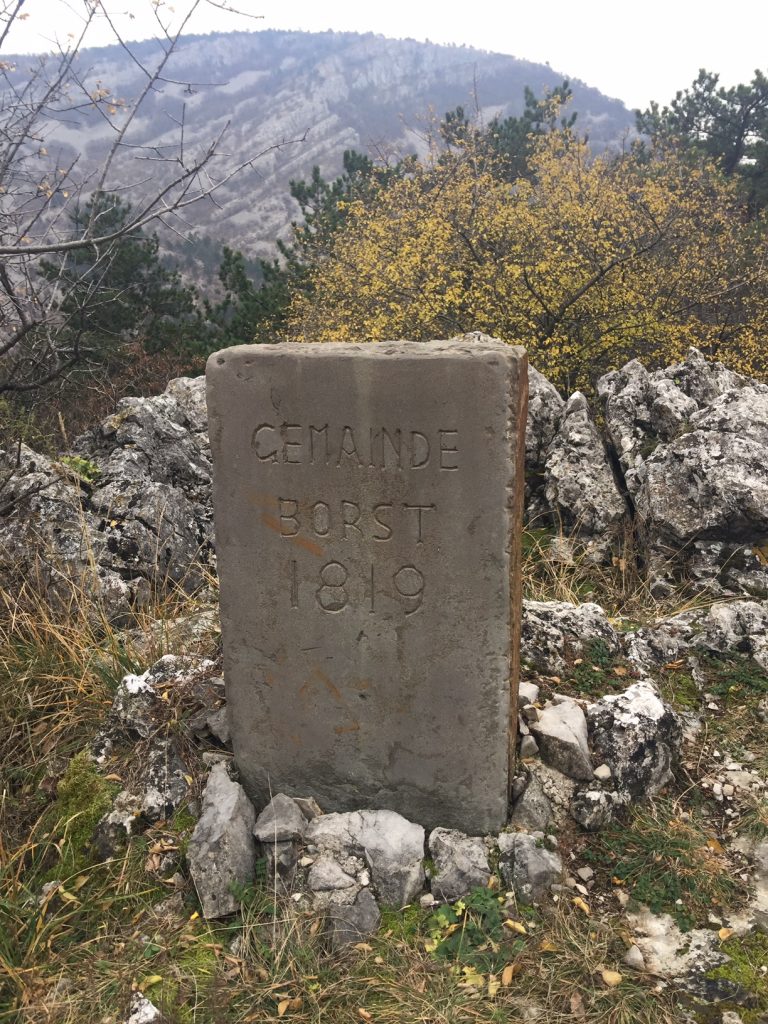
The trenches of Mount San Michele are bound to disappear and need urgent tending for their historical value. As previously mentioned, the hill belongs to the “comunelle” of Bagnoli and Moccò (land ownership passes from generation to generation of the residents of small communities of Carso), and it is probably difficult to find an agreement, the funds, or the time, to clear the paths and restore the military site.
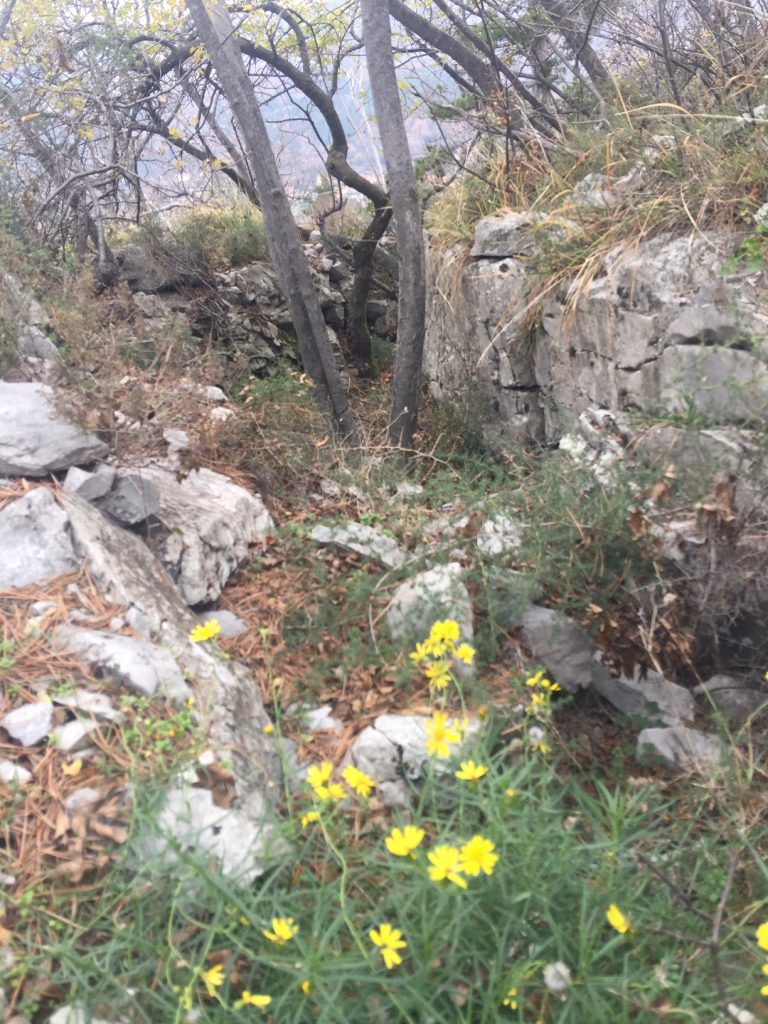
It will take you approximately one hour to visit Mount San Michele starting from Bagnoli village (the 40 bus will take you there from central Trieste, with a stop on via Carducci, near piazza Oberdan). You can plan the visit on a weekend when the regular trails in Val Rosandra are packed with people. If you go on a weekday you can continue your hike uphill towards San Lorenzo and visit the little Karst church at the end of the village.

On the way back, you can walk to Trieste city center following the Cottur trail, a fantastic bike and pedestrian route along the old railway line that runs from the Slovenian border to San Giacomo across spooky tunnels, woods and a variety of suburban wonders, including old stations and stationmasters’ houses that are now either transformed into private homes or suggestively abandoned.





























